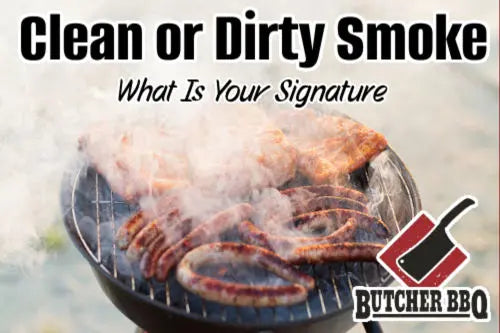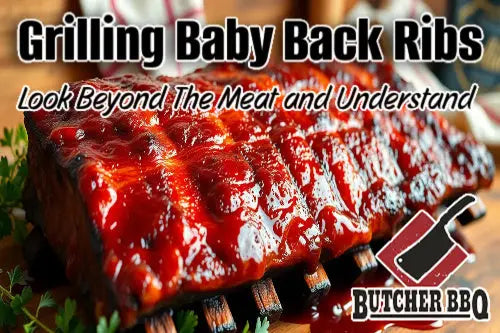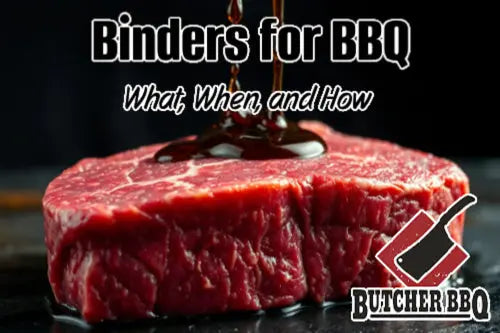
Dirty Smoke vs. Clean Smoke: The Key to Mouthwatering Barbecue
What if I Like Dirty Smoke? We Can't Be Friends Anymore
As a passionate barbecue enthusiast, I've learned that the quality of the smoke is just as important as the quality of the meat itself. The difference between "dirty smoke" and "clean smoke" can make or break your barbecue experience. In this blog post, we'll dive into the world of smoke and explore how mastering this element can take your backyard barbecue to new heights.
What is Smoke in Barbecue?
Smoke is the essence of barbecue. It's the invisible yet powerful ingredient that infuses your meat with that irresistible, smoky flavor we all crave. But not all smoke is created equal. There are two distinct types of smoke that can impact your barbecue in vastly different ways: clean smoke and dirty smoke.
Clean Smoke: The Holy Grail of Barbecue
Clean smoke, often referred to as "blue smoke" or "white smoke," is the holy grail of barbecue. This type of smoke is thin, wispy, and almost invisible. It has a sweet, subtle aroma that gently envelops the meat, imparting a delicate, well-balanced flavor.
The key characteristics of clean smoke are:
- Color: Blue or white in appearance
- Aroma: Sweet, subtle, and inviting
- Density: Thin and wispy, almost invisible
Clean smoke is the result of a well-managed fire, where the fuel is burning at the optimal temperature and oxygen levels. This allows for complete combustion, producing minimal particulate matter and maximum flavor-enhancing compounds.
The benefits of clean smoke for your barbecue are numerous:
- Enhanced Flavor: The subtle, nuanced smoke flavors perfectly complement the natural taste of the meat.
- Improved Appearance: Clean smoke leaves a beautiful, uniform smoke ring on the surface of the meat.
- Healthier Meat: Clean smoke contains fewer carcinogenic compounds compared to dirty smoke.
Achieving clean smoke is the holy grail for any serious barbecue enthusiast, as it's the key to mouthwatering, competition-worthy results.
Dirty Smoke: The Barbecue Saboteur
On the other hand, dirty smoke is the bane of any barbecue master's existence. This type of smoke is thick, heavy, and often visible as a dark, billowing cloud. It has a harsh, acrid aroma that can overpower the natural flavors of the meat.
The key characteristics of dirty smoke are:
- Color: Dark, thick, and visible
- Aroma: Harsh, acrid, and unpleasant
- Density: Heavy and billowing
Dirty smoke is the result of an improperly managed fire, where the fuel is burning at suboptimal temperatures and oxygen levels. This leads to incomplete combustion, producing a high concentration of particulate matter and undesirable compounds.
The negative effects of dirty smoke on your barbecue are significant:
- Overpowering Flavor: The harsh, acrid smoke can overwhelm the natural flavors of the meat, resulting in an unpalatable final product.
- Unsightly Appearance: Dirty smoke can leave an uneven, splotchy smoke ring on the surface of the meat.
- Potential Health Risks: Dirty smoke contains higher levels of carcinogenic compounds, which can be harmful if consumed in excess.
Avoiding dirty smoke is crucial for any barbecue enthusiast who wants to achieve mouthwatering, competition-worthy results.
Sources of Clean Smoke
Achieving clean smoke can be a bit of a challenge, but it's not impossible. There are several sources of clean smoke that you can utilize in your backyard barbecue:
Wood Fire
Cooking over a well-managed wood fire is one of the most traditional and effective ways to generate clean smoke. By using high-quality, seasoned hardwoods like oak, maple, or hickory, you can create a consistent, low-and-slow burn that produces that coveted blue or white smoke.
Charcoal
Charcoal can also be a great source of clean smoke, but it requires a bit more finesse. By using high-quality lump charcoal and carefully controlling the airflow, you can achieve a steady, even burn that produces clean, flavorful smoke.
Pellet Cooking
Pellet grills and smokers are becoming increasingly popular for their ability to produce consistent, clean smoke. The pellets are made from compressed hardwood sawdust, which burns cleanly and evenly, providing a reliable source of smoke.
Mastering Clean Smoke
Achieving clean smoke is all about proper fire management. Here are some tips to help you master the art of clean smoke:
- Maintain the Optimal Temperature: Keep your cooking temperature in the low-and-slow range, typically between 225°F and 275°F. This ensures complete combustion and minimizes the production of dirty smoke.
- Regulate Airflow: Proper airflow is crucial for clean smoke. Make sure your vents or dampers are adjusted to allow just the right amount of oxygen to reach the fire.
- Choose the Right Wood: Select high-quality, seasoned hardwoods like oak, maple, or hickory. Avoid softwoods like pine, as they can produce a lot of dirty smoke.
- Avoid Moisture: Wet or unseasoned wood can lead to the production of dirty smoke. Make sure your wood is properly dried and stored before using it.
- Monitor Your Fire: Keep a close eye on your fire, making adjustments as needed to maintain a steady, even burn and prevent the production of dirty smoke.
By mastering the art of clean smoke, you'll be well on your way to creating mouthwatering, competition-worthy barbecue that will have your friends and family begging for more.
Conclusion
The difference between dirty smoke and clean smoke is the difference between a mediocre barbecue and a truly exceptional one. By understanding the characteristics of each type of smoke and learning how to consistently produce clean smoke, you'll unlock the key to creating mouthwatering, competition-worthy barbecue that will have your guests raving.
So, the next time you fire up your grill or smoker, remember: it's all about the smoke. Embrace the clean, subtle flavors of blue or white smoke, and leave the dirty, acrid smoke behind. Your taste buds (and your guests) will thank you.




